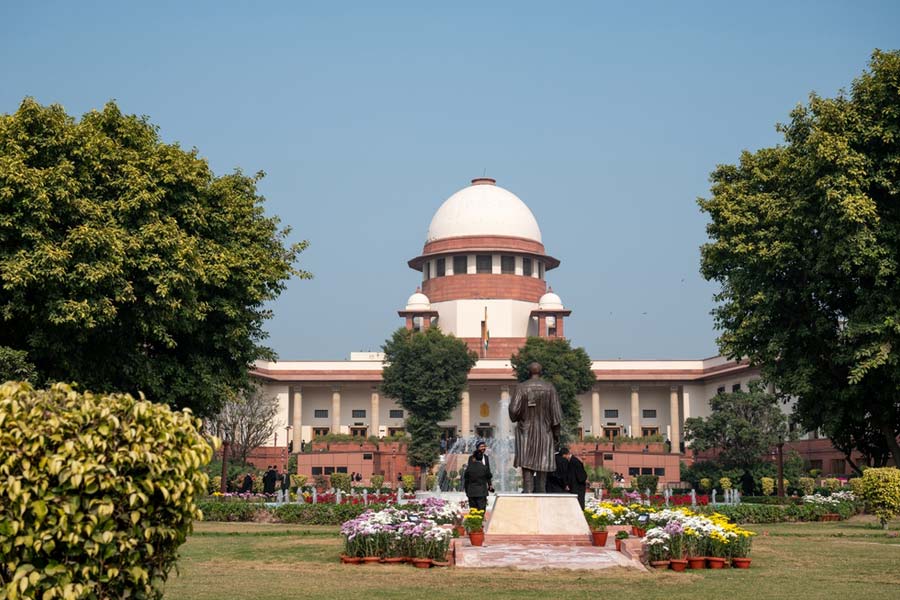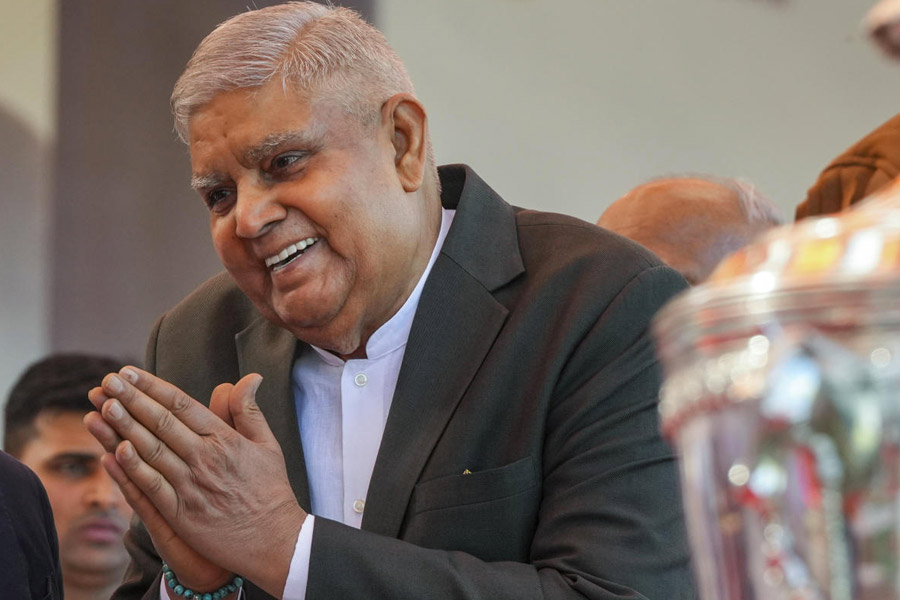
Aurangabad, Aug. 20: For Rs 400, visitors to the Ajanta caves can get a "guided" tour of the ancient Buddhist rock art.
The flip side is, the person taking you around will most certainly be a doorkeeper - not certified guides who charge at least three to nearly six times more. But Subham Guha would rather pay the higher rate.
The Buddhist scholar, who recently visited the Unesco World Heritage site, said attendants posted by the Archaeological Survey of India at the entrance to the Ajanta caves in Maharashtra's Aurangabad district were always on the lookout to illegally "guide" tourists on the wall paintings and charge money from them.
"But without proper knowledge and training, it's not possible for one to explain the artistic finesse behind the paintings such as Bodhisatva Padmapani, their evolution as well as their philosophical and technical beauty," Guha said.
The 30 rock-cut caves, built between the 2nd century BC and 6th century AD by Buddhist monks, house wall paintings and rock sculptures depicting the life cycle of the Buddha and the Jataka tales, a body of Buddhist literature. The caves draw more than four lakh tourists round the year.
ASI-approved guides, who get their licence only after a due procedure of selection and training, charge Rs 1,370 for a group of up to five visitors; Rs 1,730 for six to 14 persons, and Rs 2,300 for a group of 15 to 40. So, a substantial number of visitors prefer the attendants as guides to go easy on their pockets.
In the process, Guha said, they get a "wrong interpretation" of the paintings.
A guide, who didn't want to be named, agreed. "Explaining the Ajanta paintings is not just storytelling from the Jataka tales," he said.

"The paintings cover a deep understanding of the socio-cultural and socio-economic lifestyle of the community of that time. They represent the skill of the artist monks. The guides explain the pictorial theme through visual representation."
For an untrained person, unravelling the meaning behind the paintings is difficult, if not impossible. Which explains the special training that the guides approved by the ASI get - in the history of Indian art and architecture, philosophy and religion with special reference to Buddhism.
ASI deputy superintending archaeologist engineer Peddintlu N. said the culture ministry wing "does not approve of attendants guiding tourists" for money. "If they are ASI-appointed employees, they must have a batch ID. On receiving specific complaints, we will definitely take steps against the erring workers."
Being shown around by untrained "guides" is not the only problem that ails the popular tourist spot. A major problem is overcrowding.
The ASI allows up to 40 visitors for a period of 15 minutes in the caves with the maximum number of paintings - which means caves 1, 2, 16 and 17. According to rules, there should be an interval of five minutes before the next batch enters. But the rules take a back seat when the attendants take tourists around.
"When the caves get overcrowded, the attendants remain busy guiding the tourists. At times, they don't even notice that some visitors have taken photographs using flash bulbs inside the caves," Guha said.
Taking photographs of the paintings is allowed but flash bulbs can't be used.
Inadequate drinking-water kiosks, only four over a 2km stretch; unhygienic toilets and poor garbage disposal pose other challenges to the Centre's much-touted Swachh Bharat drive in the area.
"The kiosks are not properly maintained. I've seen people washing their face and spitting in the basin. The labourers working at the caves wash their lunchboxes in the same basin," said Radhika Mohapatra, a tourist from Odisha.
Sushil Joshi, a tourist from Uttar Pradesh, pointed to another problem. "No signboards are at proper places. I could not understand outside which cave I needed to remove my shoes," Joshi said.
As for garbage disposal, there are not enough bins to collect the waste. "For a world heritage site, it's a shame that garbage separation and disposal was not given any thought," said Martha Bell from Hampshire, England.
There is also a need to develop international standard toilets for visitors. Instead, the sole toilet area for tourists located below cave No. 19 remains dirty most of the time.
Among those who visited the caves in 2016-17, 18,642 were foreigners.
Superintending archaeologist Dilip Kumar Kamari said the ASI has implemented the Centre's Swachhta Pakhwada drive to ensure proper sanitation and cleanliness in and around the caves. "Besides, we have plans to increase the number of dustbins and water kiosks in the site shortly."










